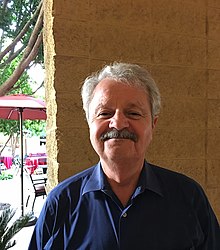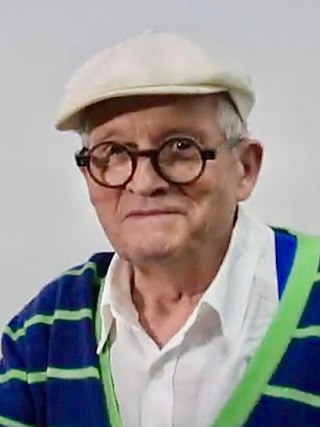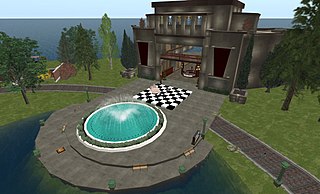
Charles M. Falco (born August 17, 1948) is an American experimental physicist and an expert on the magnetic and optical properties of thin film materials. [1]

Charles M. Falco (born August 17, 1948) is an American experimental physicist and an expert on the magnetic and optical properties of thin film materials. [1]
Falco earned his Ph.D. at the University of California, Irvine in 1974 and spent the next eight years at Argonne National Laboratory before joining the University of Arizona in 1982 as a Professor of Optical Sciences. In 1989, he received the Alexander von Humboldt Foundation Senior Distinguished U.S. Scientist Award, and in 1998 was awarded the UA Chair of Condensed Matter Physics. Falco, a Fellow of the American Physical Society, the Institute of Electrical and Electronics Engineers (IEEE), the Optical Society of America, and the Society of Photo-optical Instrumentation Engineers (SPIE) has published more than 250 scientific manuscripts, most of which are related to physical properties of materials produced by Molecular Beam Epitaxy (MBE), co-edited two books, has seven U.S. patents, and has given more than 250 invited talks on his research at conferences and research institutions in 25 countries.
In addition to his scientific research, in 1975 Falco was one of three participants in Chris Burden's performance art piece '220', and since 1985 his photography has been represented by the agency PhotoResearchers. [2] In 1998 Falco was co-curator of the Solomon R. Guggenheim Museum's The Art of the Motorcycle , for which he also wrote the exhibition catalog's introductory essay and bibliography. [3] With over 2 million visitors in New York, Chicago, Bilbao, Spain and the Guggenheim Las Vegas, it was the most successful exhibition of industrial design ever assembled, and one of the most attended museum exhibition of any kind. [4] For this work he received an award from the International Association of Art Critics, along with architect Frank Gehry, museum director Thomas Krens, and filmmaker Ultan Guilfoyle. In 1999, Falco was a technical advisor for the Nam June Paik retrospective at the Guggenheim.
In 2000, Falco began collaborating with the British-American artist David Hockney, resulting in their discovery of scientific evidence in paintings made as early as c.1430 that demonstrated portions of them were created with the aid of optical projections. Hockney's 2001 book Secret Knowledge resulted in widespread coverage of the "Hockney-Falco Thesis" in the popular media, including an hour-long BBC special and a segment on the CBS show 60 Minutes . In 2008, Falco gave the US National Art Education Association's 'Ziegfeld Lecture', awarded for his role in this theory, and for its importance for art education.

The Guggenheim Museum Bilbao is a museum of modern and contemporary art designed by Canadian-American architect Frank Gehry, and located in Bilbao, province of Biscay, Spain. The museum was inaugurated on 18 October 1997 by King Juan Carlos I of Spain, with an exhibition of 250 contemporary works of art. Built alongside the Nervion River, which runs through the city of Bilbao to the Cantabrian Sea, it is one of several museums belonging to the Solomon R. Guggenheim Foundation and features permanent and visiting exhibits of works by Spanish and international artists. It is one of the largest museums in Spain.

David Hockney is an English painter, draughtsman, printmaker, stage designer, and photographer. As an important contributor to the pop art movement of the 1960s, he is considered one of the most influential British artists of the 20th century.
Christopher William Tyler is a neuroscientist, creator of the autostereogram, and is the Head of the Brain Imaging Center at the Smith-Kettlewell Eye Research Institute He also holds a professorship at City University of London.
Events from the year 2000 in art.
SPIE is an international not-for-profit professional society for optics and photonics technology, founded in 1955. It organizes technical conferences, trade exhibitions, and continuing education programs for researchers and developers in the light-based fields of physics, including: optics, photonics, and imaging engineering. The society publishes peer-reviewed scientific journals, conference proceedings, monographs, tutorial texts, field guides, and reference volumes in print and online. SPIE is especially well-known for Photonics West, one of the laser and photonics industry's largest combined conferences and tradeshows which is held annually in San Francisco. SPIE also participates as partners in leading educational initiatives, and in 2020, for example, provided more than $5.8 million in support of optics education and outreach programs around the world.

A virtual museum is a digital entity that draws on the characteristics of a museum, in order to complement, enhance, or augment the museum experience through personalization, interactivity, and richness of content. Virtual museums can perform as the digital footprint of a physical museum, or can act independently, while maintaining the authoritative status as bestowed by the International Council of Museums (ICOM) in its definition of a museum. In tandem with the ICOM mission of a physical museum, the virtual museum is also committed to public access; to both the knowledge systems embedded in the collections and the systematic, and coherent organization of their display, as well as to their long-term preservation. As with a traditional museum, a virtual museum can be designed around specific objects, or can consist of online exhibitions created from primary or secondary resources. Moreover, a virtual museum can refer to the mobile or World Wide Web offerings of traditional museums ; or can be born digital content such as, 3D environments, net art, virtual reality and digital art. Often, discussed in conjunction with other cultural institutions, a museum by definition, is essentially separate from its sister institutions such as a library or an archive. Virtual museums are usually, but not exclusively delivered electronically when they are denoted as online museums, hypermuseum, digital museum, cybermuseums or web museums.

John Thomas Spike is an American art historian, curator, and author, specializing in the Italian Renaissance and Baroque periods. He is also a contemporary art critic and past director of the Florence Biennale.

Nader Engheta is an Iranian-American scientist. He has made pioneering contributions to the fields of metamaterials, transformation optics, plasmonic optics, nanophotonics, graphene photonics, nano-materials, nanoscale optics, nano-antennas and miniaturized antennas, physics and reverse-engineering of polarization vision in nature, bio-inspired optical imaging, fractional paradigm in electrodynamics, and electromagnetics and microwaves.

The Hockney–Falco thesis is a theory of art history, advanced by artist David Hockney and physicist Charles M. Falco. Both argued that advances in realism and accuracy in the history of Western art since the Renaissance were primarily the result of optical instruments such as the camera obscura, camera lucida, and curved mirrors, rather than solely due to the development of artistic technique and skill. Nineteenth-century artists' use of photography had been well documented.

Study of a Young Woman is a painting by the Dutch artist Johannes Vermeer, completed between 1665 and 1667, and now in the Metropolitan Museum of Art, New York.

Anthony Michael Johnson is an American experimental physicist, a professor of physics, and a professor of computer science and electrical engineering at the University of Maryland, Baltimore County (UMBC). He is the director of the Center for Advanced Studies in Photonics Research (CASPR), also situated on campus at UMBC. Since his election to the 2002 term as president of the Optical Society, formerly the Optical Society of America, Johnson has the distinction of being the first and only African-American president to date. Johnson's research interests include the ultrafast photophysics and nonlinear optical properties of bulk, nanostructured, and quantum well semiconductor structures, ultrashort pulse propagation in fibers and high-speed lightwave systems. His research has helped to better understand processes that occur in ultrafast time frames of 1 quadrillionth of a second. Ultrashort pulses of light have been used to address technical and logistical challenges in medicine, telecommunications, homeland security, and have many other applications that enhance contemporary life.
Richard C. Powell is an American professor emeritus of physics and vice president emeritus of the University of Arizona (UA), whose career focused on research in materials science and laser optics. He served as president of the Optical Society of America in 2000.

The Art of the Motorcycle was an exhibition that presented 114 motorcycles chosen for their historic importance or design excellence in a display designed by Frank Gehry in the curved rotunda of the Frank Lloyd Wright-designed Solomon R. Guggenheim Museum in New York City, running for three months in late 1998. The exhibition attracted the largest crowds ever at that museum, and received mixed but positive reviews in the art world, with the exception of some art and social critics who rejected outright the existence of such a show at an institution like the Guggenheim, condemning it for excessive populism, and for being compromised by the financial influence of its sponsors.

The Michaux-Perreaux steam velocipede was a steam powered velocipede made in France some time from 1867 to 1871, when a small Louis-Guillaume Perreaux commercial steam engine was attached to a Pierre Michaux manufactured iron framed pedal bicycle. It is one of three motorcycles claimed to be the first motorcycle, along with the Roper steam velocipede of 1867 or 1868, and the internal combustion engine Daimler Reitwagen of 1885. Perreaux continued development of his steam cycle, and exhibited a tricycle version by 1884. The only Michaux-Perreaux steam velocipede made, on loan from the Musée de l'Île-de-France, Sceaux, was the first machine viewers saw upon entering the Solomon R. Guggenheim Museum rotunda in The Art of the Motorcycle exhibition in New York in 1998.

The Daimler Reitwagen or Einspur was a motor vehicle made by Gottlieb Daimler and Wilhelm Maybach in 1885. It is widely recognized as the first motorcycle. Daimler is often called "the father of the motorcycle" for this invention. Even when the steam powered two-wheelers that preceded the Reitwagen, the Michaux-Perreaux and Roper of 1867–1869, and the 1884 Copeland, are considered motorcycles, it remains nonetheless the first gasoline internal combustion motorcycle, and the forerunner of all vehicles, land, sea and air, that use its overwhelmingly popular engine type.
Yang Yang is a Taiwanese-American materials scientist. He is a Professor of Materials Science and Engineering, and Professor of Bioengineering at the University of California, Los Angeles, where he holds the Carol and Lawrence E. Tannas Jr. Endowed Chair in Engineering. Yang is known for his contributions to polymer organic solar cells and lead-halide perovskite solar cells. He was named as one of the "World’s Most Influential Scientific Minds" by Thomson Reuters in 2016. Yang is a fellow of the American Association for the Advancement of Science, American Physical Society, Materials Research Society, Royal Society of Chemistry, and Society of Photo-Optical Instrumentation Engineers.

The Curtiss V-8 motorcycle was a 269 cu in (4,410 cc) V8 engine-powered motorcycle designed and built by aviation and motorcycling pioneer Glenn Curtiss that set an unofficial land speed record of 136.36 miles per hour (219.45 km/h) on January 24, 1907. The air-cooled F-head engine was developed for use in dirigibles.
Richard Magee Osgood Jr. was an American applied and pure physicist. He was Higgins Professor of Electrical Engineering and Applied Physics at Columbia University.

Charles Vernon (Chuck) Shank is an American physicist, best known as the director of the Lawrence Berkeley National Laboratory from 1989 to 2004.
Monika Schleier-Smith is an American experimental physicist studying many-body quantum physics by precisely assembling systems of ultracold atoms. Her research helps connect the world of theoretical and experimental physics. These atomic, molecular, and optical physics (AMO) engineered systems have applications in quantum sensing, coherent control, and quantum computing. Schleier-Smith is an associate professor of physics at Stanford University, a Sloan Research Fellow, and a National Science Foundation CAREER Award recipient. Schleier-Smith also serves on the board of directors for the Hertz Foundation. She also works to improve education through speaking and serving on panels.